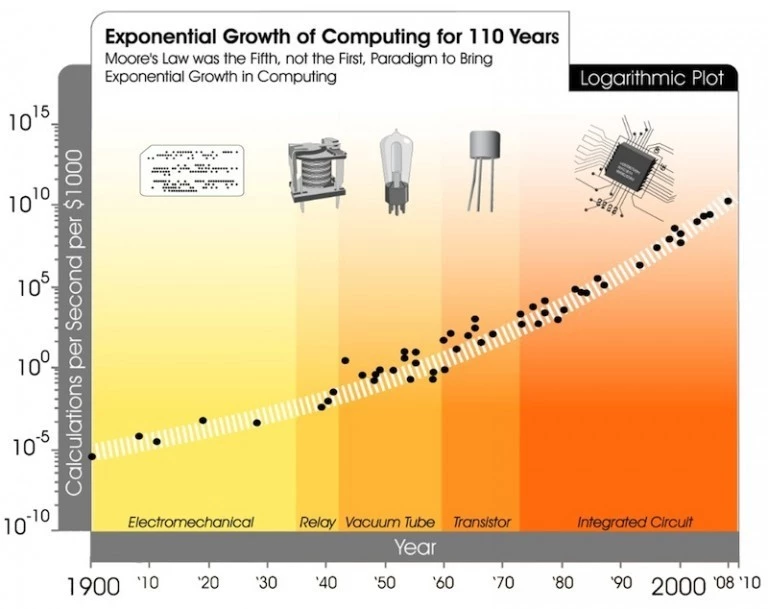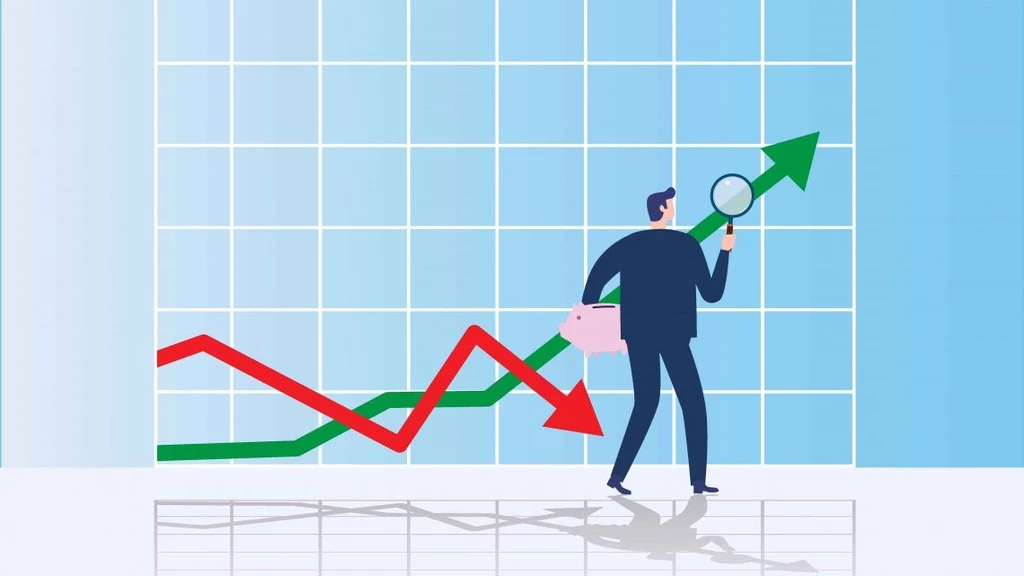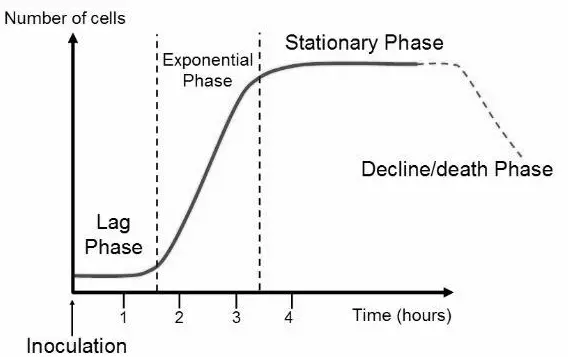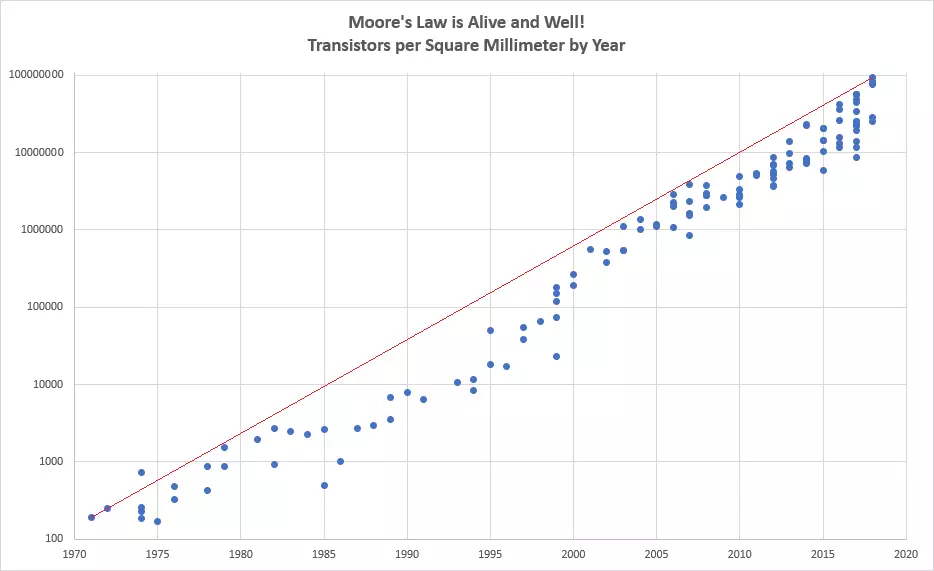An exponential function is a mathematical representation of a population’s steady growth over a specific period. A large number of experts use the evaluation of exponential functions to provide support for business choices, find variables in research, and uncover elements that impact different forms of data.
If you operate in a field that often depends on statistical information, it is particularly vital to understand how growth might occur exponentially. This article will explain what exponential growth is, why it is essential, who uses it, how to calculate it and provide an example to help you along the way.
The function known as exponential growth depicts a rise in the size of a population that stays relatively constant over time. You may safely assume that data grows exponentially whenever a population experiences a doubling or tripling in size.
Exponential decay is the process through which data decreases rather than increases, which is the inverse of exponential growth. When you plan your data on a graph, the pattern that an exponential function displays will seem like an incline in the upward direction.
Exponential Functions

The fact that exponential functions use exponents makes them seem somewhat like functions you have seen in the past. However, there is an essential distinction between the two: the variable is now the power rather than the base.
Also, the exponential values produced by such functions have something called a “doubling period,” meaning that if you wait for a long time, they will expand at an incredible pace.
Importance of Exponential Growth
The ability to work with data that grows at an exponential rate is valuable in many different fields of work. Still, it is particularly significant in research and development, scientific studies, business and data analytics, finance, and accounting.
Take into consideration the following critical justifications for the exponential function:
Technological Innovation

There are a significant number of applications in the fields of computer science and info technology that can potentially depend on statistical information for population expansion.
When developing automated software, machine learning algorithms, and artificial intelligence processes in a digital environment, data scientists and programmers may calculate exponential increases in outputs over time for a particular input.
This may be done in the context of developing artificial intelligence. Suppose a programmer, for example, makes use of a particular method as an input to create outputs over time, then ca. In that case,
Trends Identification

The exponential growth of any information collected may provide insight into emerging patterns in a population for professionals in fields as diverse as medicine, science, and technology, as well as in business and finance.
For instance, clinical researchers may employ exponential functions to graph the improvements in favorable health outcomes associated with newly developed drugs. The leaders of businesses may also use exponential functions to recognize patterns in the growth of brands, consumer markets, and advertising expenses.
Measuring Financial Metrics
When trying to estimate return forecasts for specific periods, those in the finance and accounting professions sometimes depend on growth functions. A compound return is one investment return that accrues on the initial investment capital and any growth the investment experiences.
This type of return is an example of the metrics that may be used. When compound returns are accrued, your investment account’s value experiences exponential growth for every increase in the principal.
This exponential growth is also possible with loans, mainly if the interest rate is variable and accumulates throughout the loan.
Spread Of Virus

In most cases, the propagation of a virus follows an exponential growth pattern. The most effective way to see this in action is to examine the transmission of a viral illness.
The virus that causes the sickness is spread from the person who is a carrier to the other people and items that the page touches, which increases the number of persons infected with the virus.
The number of afflicted persons continues to rise at an alarmingly quick pace, indicating that the spread of the disease is unquestionably exponential.
Fission Chain Reaction
Several different chemical processes have exponential growth. For instance, the nucleus of a uranium atom will split into two congruent portions if subjected to an external neutron bombardment.
This reaction is very exothermic and generates a significant amount of heat released into the atmosphere. The two halves of the parent nucleus that have already broken off continue to divide, and this process may continue indefinitely. This sets off a series of nuclear fission processes until the sample uranium element is ultimately used.
The amount of energy that can be gotten from these types of nuclear reactions is reasonably large, and it is about equivalent to 200 mega electron volts.
Pyramid Schemes

Ponzi schemes and pyramid marketing scams are two names for the same thing. They operate based on a business model that requires members to be recruited, and those members are paid based on the number of other members they enlist.
Every registered member is responsible for actively recruiting new members under their supervision. This results in a surge in the total number of members of the organization at each successive stage.
As a result, multi-level marketing schemes are excellent illustrations of exponential development in the real world.
Growth Of Microorganisms

The multiplication of bacteria in a culture is an excellent illustration of exponential growth since it occurs in real life and is one of the most remarkable instances of such development. Bacteria are microorganisms that only have a single cell and are too small to be seen with the human eye.
They can endure high temperatures and pressures and can be found in practically every living and nonliving thing on earth. They are also present in almost every environment on the planet. Bacteria replicate by a course known as binary fission, where the parent cell is split into two daughter cells. This allows the bacteria to continue their lineage.
The daughter cells each undergo a second division to produce two new cells. This process repeats itself indefinitely, resulting in an exponential upsurge in the number of bacteria in a relatively short time.
Data Circulation On The Internet
The internet offers a vast platform on which users may exchange information. It is usual for the circulation of data on the internet to be exponential. This is because the data are passed on from one person to the next, the receivers of the material further pass on the information to many users, and the process continues on and on. Because of this, they are removing information from the internet or extracting it is an almost complex operation.
Moore’s Law

Moore’s law was given its name in honor of Gordon E. Moore, one of Intel’s founders. It is a symbol of Gordon E. Moore’s philosophy and his observation that the number of transistors needed to construct a microchip is increasing at a rate of one for every year that passes.
Maintaining an annual record of the number of transistors used by microchips would exhibit an exponential curve, depicting the exponential rise of microprocessors.
Human Population
When trying to get a hold of exponential growth, it is easiest to look at how the human population has expanded through time. The most recent study that was carried out in the year 2019 indicated that the people of the planet had reached 7,673,533,974, and it is expanding at an exponential and rapid pace.
Food Spoilage
The activity of microbes such as fungi, bacteria, yeast, and other similar creatures is often what causes food to become bad. The process of microbial degradation is often dependent on temperature, moisture, and other conditions that accelerate the development of microorganisms that cause deterioration in the product.
The rate at which these bacteria multiply or otherwise expand is exponential. However, the pace at which food products go wrong may be slowed down significantly via techniques such as salting and smoking.
Patient Count During Virus Spread
A disease that has spread to more than one continent and is affecting people on a global scale is referred to as a pandemic.
Look at the number of patients infected by a particular illness during the pandemic. You will quickly see that the number of new patients is being added to the number of patients who are already infected daily.
This procedure is then carried out once again the next day, and so on, which exemplifies the concept of exponential development.
Weed Growth
Another real-world phenomenon that exemplifies exponential growth is the spread of weeds. Plants that are not desired yet continue to grow and compete with desirable plants for nutrition are known as weeds. They have a fast expansion that conforms to the exponential pattern of development.
If the development of weeds is not intentionally controlled, they have the potential to take over the area in a short period completely. Weeds may be removed from a specific location using procedures such as weeding.
Cancerous Cells

When a healthy cell from one part of the body comes into touch with an infected or cancerous cell from another, there is a higher risk of cancer or infection spreading to the healthy cells and converting them into malignant cells.
This process of passing the infection to neighboring cells represents an exponential growth that continues until artificial methods such as laser surgery, radiotherapy, and other similar treatments are used to alter or damage the chain of cancerous cells. Until then, the chain of cancerous cells will continue to grow exponentially.
Fire Spread

The destructive power of fire is unparalleled among the forces of nature. Because of the exponential connection between the fire and the combustible things, the pace at which the fire spreads increases quickly.
When an explosive item is set ablaze by fire, it tends to develop other things in its immediate vicinity ablaze as well. The freshly lighted components send the energy to their neighboring things, which causes those objects also to catch fire.
The number of things being consumed by fire increases after every moment, demonstrating the exponential growth that occurs in real life.
Product Sale
The market is one of the most common and well-known settings where the idea of exponential development may be seen in practice.
If you look at a graph that compares the sales of a popular product to the passage of time, you’ll see that the sales curve is flat at the beginning, then it increases steadily, and then it suddenly spikes after a certain period has passed. This is indisputably an example of an exponential curve.
Rice ON Chess Board
The narrative of rice on a chessboard is an old one that illustrates the idea of growth on an exponential scale. It entails a wise man demanding the winning price in rice grains.
It is required that the rice grains be decided in such a way that the first square of the chessboard contains one grain of rice, the second square contains two grains, the third square has four grains, and so on. This indicates that each block of the chessboard has several grains that are precisely the same as the number of grains on the block that came before it.
This indicates that the total number of grains tends to expand at an exponential rate, and the last square of the chessboard has nine times ten to the power of eighteen grains of rice.
Water Lily

When planted in a body of water such as a pond or lake, a lily pad begins the reproduction process as soon as the favorable circumstances necessary for the operation are satisfied. If a lily pad were to generate offspring once each day, the number of lily pads would rise by an aspect of two every single day.
This indicates that the number of lilies in the water on the second day would be two if you were to witness it at that time. The number four would be reached on the third day, followed by sixteen on the fourth day, and so on.
The number of water lilies in the body of water would reach 128 after a week, and their population continues to expand as it did in the beginning. As a result, it follows exponential development.
Folding Paper
When you begin to fold a sheet of paper with a thickness of 0.001 centimeters in half, you will see that after you fold it once, the consistency gets doubled and climbs to 0.002 centimeters. This is because the thickness of the paper doubles every time it is folded. After one more folding, the thickness of the paper is 0.004 centimeters.
The thickness of the paper increases to 1.024 centimeters after it has been folded ten times. The thickness of the article would be 33,554 centimeters (or 1,100 feet) once it had been folded twenty-five times. It is not difficult to see how quickly the thickness of the paper is increasing exponentially. On the other hand, a single sheet of good-quality paper can only be folded twelve times. You are free to test it out on your own and verify its accuracy.
Methods to Calculate Exponential Growth
To calculate the exponential growth that occurs over some time, use the formula and the procedures that follow as a guide:
Addition Of Growth Rate
Determine the growth rate, insert this number into the formula in place of the r variable, and then add one. Take, for instance, the case of an environmental researcher looking at the reproduction rate in a population of fish. The researcher estimates that the growth rate is 10% if they find that there has been a consistent 10% rise between the prior and current spawning seasons.
f(x) = a(1+r)x =
f(x) = a(1+0.1)x =
f(x) = a(1.1)x =
Raise The Sum Of R & Or To The X Power
Figure out how much time has handed since the population started growing. This value should be expressed in years, with one year equaling 1, six months equaling 0.5, and so on. Using the researcher as an example, let’s say they keep track of the fish population increase over 18 months. This number, when entered into the formula for the x variable, will give you the following results:
f(x) = a(1.1)x =
f(x) = a(1.1)(1.5) =
Multiplying The Initial Value
Find out the initial value of your data, which is the point at which growth starts before it begins to expand exponentially. This number will serve as the first point of reference for the variable if the researcher uses the example of recording six new fish progeny at the beginning. In the formula, replace your starting value with the following:
f(x) = a(1.1)(1.5) =
f(x) = 6(1.1)(1.5) =
Evaluate The Results
In the formula, the term f(x) stands for the factor that reflects it by which the growth function multiplies during the time period being evaluated. Following the execution of the calculation, your f(x) variable will have a value in numerical form. Using the example of the researcher, one way to estimate the multiplier is for that person to compute their data using the formula:
f(x) = a(1 +r)x =
f(x) = 6(1.1)(1.5) =
f(x) = 6(1.15) = 6.9
Example
When compounding interest is added to the initial amount saved, a financial analyst wants to know the total worth of their client’s savings at the end of the period. The analyst applies the exponential function to the evaluation of their customer’s assets to calculate how much their client may be able to save after a certain amount of time.
For computing compound interest, the financial analyst makes use of a modification of the formula for exponential growth known as f(x) = a(1 + r)x: A is the total amount that was saved, P is the early major, r is the attention rate, and t is the period. The formula for A is P(1 + r)t, where A is the total amount saved.
If the customer opens compound savings account with a beginning capital of $5,000, the financial advisor can determine the possible returns three, five, and ten years later. The analyst arrives at the following conclusions with a rate of interest of 5%:
After three years: ($5,000)(1 + 0.05)(3) = $5,788
After five years: ($5,000)(1 + 0.05)(5) = $6,381
After ten years: ($5,000)(1+ 0.05)(10) = $8,144
